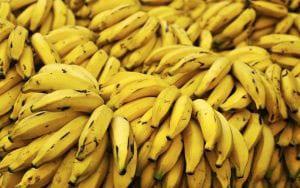I grew up working in my dad’s retail store and he used to have a saying about customer foot-traffic: They come in bunches, like bananas.
Am I the only one to notice that the saying seems to hold true with rare diseases, too? If you have one, you’re more likely to have a bunch of ‘em?

Recently, I was watching the Youtube videos generated by Ehlers-Danlos syndrome (EDS) Awareness Month and was awed by how much EDS peeps overcome and achieve every day (make sure to check out Loose Connections, the EDS Society e-magazine that’s put out three times per year).
Then I stopped by the blog of a woman with EDS, called “Life with Ehlers-Danlos Syndrome.” The subtitle/descriptor says:
One woman’s journey through life with invisible illnesses:
- EDS (Ehlers-Danlos Syndrome, Hypermobility Type)
- POTS (Postural Tachycardia Syndrome)
- LPHS (Loin Pain-Hematuria Syndrome)
- Bipolar Disorder (Type II)
- PTSD (Post-Traumatic Stress Disorder)
The blog is wonderful—the author, Dani, introduces herself by saying,
“If my life were a nut, it would definitely be a Brazil nut…They seem to be impossible to break open, but when you finally allow them to take a breath of the sweet daylight, you find a heart inside that is pure, earthy, and unique.”
The blog features tabs with everything from Dani’s amazing artwork to a “store” where she showcases products that she’s found helpful, to thoughtful links. The paintings Dani posts are inspired by the life she leads as a person with multiple chronic illnesses and they’re wonderful!
I wasn’t familiar with the National Disease Research Interchange (NDRI), until I clicked on it via Dani’s blog. One of NDRI’s slogans is: “Advancing medical research through organ tissue donation.”
It’s an organization helping to bring new treatments to patients faster, by partnering with human organ and tissue donation programs to collect and distribute specimens for testing and research. Patients and families who want to help others struggling with a particular illness can donate tissues from surgery, such as tumors, diseased organs removed during transplantation, and after death, tissues or organs that can’t be used for transplant.
The NDRI has a rare disease initiative that has procured more than 2,000 tissues representing 101 rare diseases. Cystic fibrosis, amyloidosis, Ehlers-Danlos, and sarcoidosis are just a few of the diseases that have benefited from research generated because of NDRI’s work.
But back to my original question… Almost everyone I know who has a rare disease has more than one. So… do rare diseases come in bunches? How common is it that a person with one rare disease will also have another?
Do you have more than one rare disease? Do your doctors say they’re related? Share your story with Patient Worthy!






